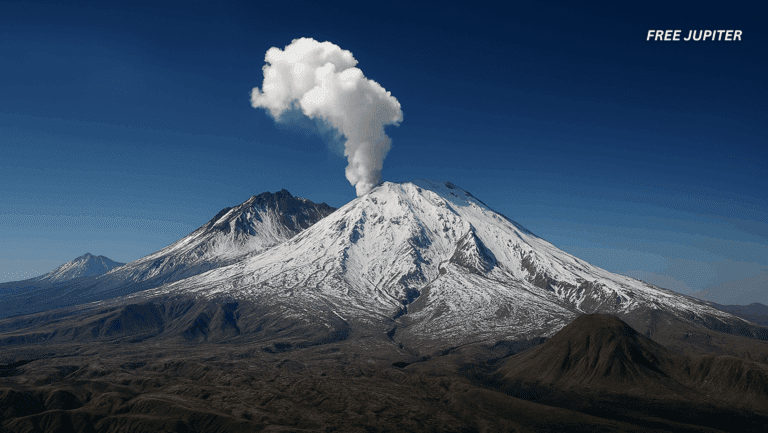Friendly Note: FreeJupiter.com shares general info for curious minds 🌟 Please fact-check all claims—and always check health matters with a professional 💙
When picturing nature’s defenders against climate change, most people think of towering rainforests, sprawling tree canopies, or fields of wildflowers swaying in the breeze. Trees have long held the spotlight in environmental campaigns as the Earth’s go-to carbon absorbers. But what if one of our most effective carbon-capturing allies is something far humbler, far smaller, and often dismissed as yard clutter?
Enter moss—a squishy, low-growing, often-overlooked plant that’s been quietly working overtime to cool the planet beneath our very noses (and feet).
Meet Moss: Nature’s Shag Carpet with Superpowers
Mosses are not your typical plants. They don’t have flowers, roots, or seeds. Instead, they belong to an ancient group of plants called bryophytes, which have been around for over 450 million years—that’s long before dinosaurs roamed the Earth. Mosses grow in carpets, clumps, or cushions, covering surfaces like rocks, tree trunks, sidewalks, and soil. And they do all this without needing much: no fertilizer, minimal water, and not even a proper root system.
But here’s the kicker: scientists have now found that moss plays a massive role in carbon storage, even outperforming trees in certain conditions. A new study led by researchers from the University of New South Wales in Australia and the Instituto de Recursos Naturales y Agrobiología de Sevilla in Spain revealed that soil covered with moss holds over 6.43 billion metric tons more carbon than bare soil in semi-arid regions.
To put that in context: that’s six times more carbon than the total annual emissions caused by global deforestation and land-use changes. All from a plant you probably haven’t thought about since slipping on it after a rainstorm.
Read more: Norway Declares Nationwide Ban on Deforestation In World-First
Why Moss Matters: The Science Behind the Green Mat
At first glance, moss doesn’t seem like a game-changer. It’s short, it’s slow-growing, and it doesn’t have the grand, leaf-sweeping gestures that trees do. But moss is a master of efficiency.
Here’s how it helps the planet:
1. Carbon Capture Prodigy
Moss captures carbon dioxide from the air during photosynthesis, just like any other plant. But what makes it extra special is how it locks that carbon into the soil. Its unique structure helps stabilize the soil, slowing erosion and allowing carbon to remain buried rather than re-released into the atmosphere. In some dry areas of the world, this carbon-trapping layer can act like a vault, keeping greenhouse gases safely underground.
2. Soil’s Best Friend
Moss doesn’t just sit pretty. It actively boosts soil health by adding nutrients, retaining moisture, and preventing the growth of harmful microbes and plant diseases. Think of it as a natural shield that protects and nourishes the ground it covers. This means better growing conditions for other plant species and greater overall biodiversity.
3. Hardy Survivor in Harsh Habitats
One of moss’s most amazing traits is its ability to grow in places where most other plants give up. From salty coastal areas to dry deserts, icy tundras, and rocky mountain slopes, moss thrives without complaint. That gives it an edge in climate-stressed environments where reforestation may not be possible or sustainable.
In fact, mosses currently cover about 9 million square kilometers—roughly the size of Canada or China. And unlike traditional crops or tree plantations, moss doesn’t need constant upkeep. It doesn’t beg for irrigation. It’s not picky about fertilizer. It just… works.
Read more: Scientists Have Found An Alarming Link Between AI Use and Psychopathy
The Study That Shook Up the Green World
The research team studied mosses in semi-arid regions, which are especially vulnerable to land degradation. These areas—characterized by low rainfall and limited vegetation—are expanding rapidly due to climate change. By comparing moss-covered soil with bare soil, scientists uncovered significant differences in carbon content, microbial life, and overall ecosystem stability.
Key findings included:
- Moss-covered soil stored more than 6 billion tons of extra carbon.
- Areas with moss had lower levels of harmful pathogens, making the environment safer for other plants to grow.
- Moss patches significantly reduced soil erosion and nutrient loss, acting like a living sponge for rain and carbon alike.
A Green Blanket with Global Impact
If the planet had a comforter, moss would be it. This unassuming green fuzz acts like a natural cooling system, regulating soil temperature and protecting the ground from the elements. In turn, this helps maintain ecosystems that support birds, insects, small mammals, and even other plant species.
And let’s not forget its role in urban spaces. Moss is increasingly being used in green roofs, vertical gardens, and eco-friendly architecture. Its lightweight nature, low water needs, and pollution-absorbing properties make it an ideal candidate for sustainable city design.
In some areas, moss has even been used as a bioindicator—a living monitor for air quality. Because mosses absorb everything around them through their leaves (they don’t have roots), they act like tiny green sponges, soaking up pollutants and giving scientists clues about environmental health.
Stop Ripping It Up, Please
Despite all this, moss often gets treated like a nuisance. Landscapers scrub it off patios. Gardeners peel it from flower beds. Hikers unknowingly trample it underfoot. But now that we know how important moss is—not just as a plant, but as a climate ally—it may be time to start giving it the respect it deserves.
Instead of scraping moss away, we should be encouraging its growth, especially in areas vulnerable to erosion and drought. There’s even growing interest in moss farming—a low-cost, low-effort strategy that could help lock away carbon while restoring degraded land.
The Bigger Picture: Climate Solutions Come in All Sizes
The discovery about moss’s superpowers is part of a broader shift in climate science: realizing that solutions don’t have to be massive to be meaningful. Small organisms—whether they’re mosses, fungi, lichens, or microbes—can have outsized impacts when it comes to building healthy, carbon-storing ecosystems.
And it’s not just about plants on land. Researchers are also diving into the role of aquatic vegetation like seagrass and algae in carbon sequestration. Understanding how different types of life—both big and small, wet and dry—interact with carbon is key to developing smarter climate strategies.
Read more: Archaeologists Uncover A 125,000-Year-Old Factory Hidden Inside Of a Hill
So, What Can You Do?
You don’t need to become a moss farmer overnight, but there are a few ways to support this tiny green hero:
- Let it grow: If you see moss in your yard, on your wall, or around your garden, leave it be. It’s doing important work.
- Avoid chemicals: Moss is sensitive to pollutants. Skip the pesticides, herbicides, and chemical cleaners where moss is growing.
- Support green architecture: From moss-covered walls to living roofs, advocate for urban planning that embraces plant life.
- Stay informed: Share the science. Moss deserves a PR makeover—and the more people know, the more likely it is to be protected.
Final Thoughts: Mighty Moss, Modest Marvel
In a world that often celebrates the loudest, tallest, and most dramatic, moss is a quiet reminder that small doesn’t mean insignificant. This gentle, unassuming plant has been quietly supporting life on Earth for hundreds of millions of years—and now, in our hour of climate crisis, it’s stepping up once again.
So the next time you see a patch of moss clinging to a rock or spreading across a forest floor, don’t dismiss it. Admire it. Appreciate it. And maybe—just maybe—thank it.
Because in the global effort to cool the planet and clean the air, moss isn’t just part of the solution.
It is the solution.










